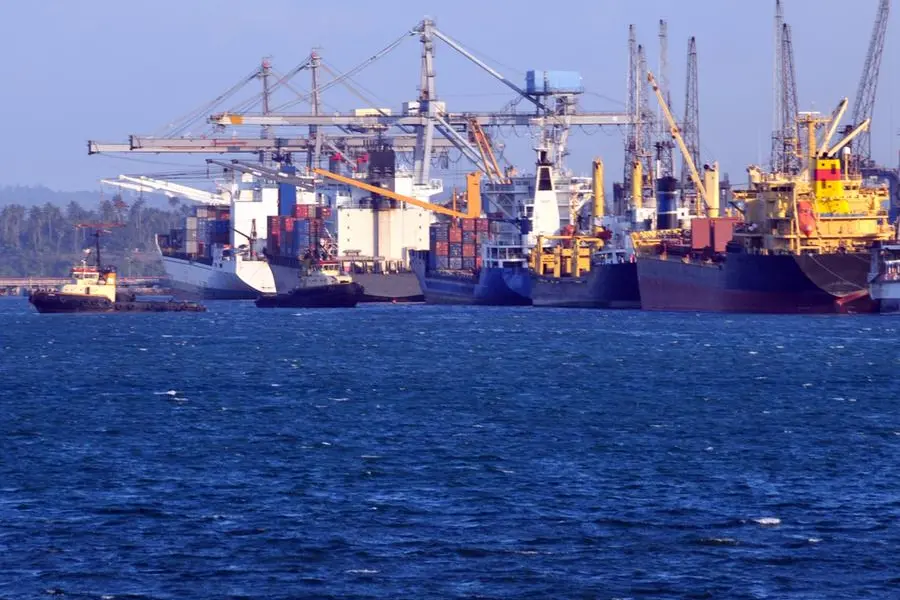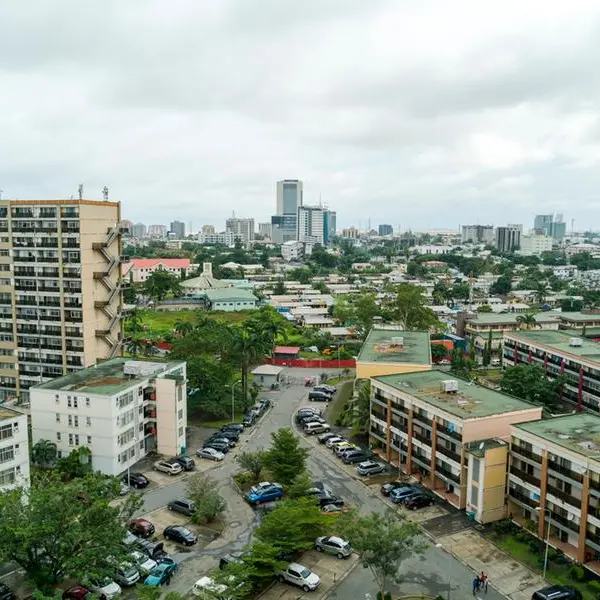PHOTO
Freighter ships and harbor cranes at the Port of Dar Es Salaam, Tanzania - the fourth largest port on the African continent's Indian Ocean coastline - operated by the Tanzania Ports Authority. Image used for illustrative purpose. Getty Images
InsightsDP World’s initial $250 million investment, poised to expand to $1 billion, has significantly upgraded Dar es Salaam Port, reducing ship turnaround times from seven days to just three and streamlining cargo handling operations.
The partnership has generated Tsh325.3 billion in revenue for the Tanzanian government, which has been reinvested into critical projects like Mgao Island Port and Dhow Wharves, further boosting the country’s trade infrastructure.
By integrating the Standard Gauge Railway (SGR) and revitalising the Tazara line, the collaboration is creating a seamless logistics network, reducing transportation costs and linking the port to key inland regions, benefitting landlocked countries in East Africa.
The partnership has already created over 30,000 direct jobs and 150,000 indirect jobs, while DP World’s focus on sustainable practices, such as the use of electric cranes, aligns with Tanzania’s green development goals and reduces the carbon footprint of port operations.
Tanzania's partnership with DP World, a global leader in logistics, marked a defining moment in the nation’s quest to modernise its key infrastructure assets.
Starting operations in April 2024, DP World’s involvement at Dar es Salaam Port has set a new standard for efficiency and innovation, aligning with Tanzania’s broader vision of becoming a central hub for East African trade.
The collaboration, characterised by an initial $250 million investment with plans to reach $1 billion, represents a bold step towards revitalising the port and catalysing economic growth. In less than a year, the changes brought by this partnership have redefined the logistics landscape of Tanzania, delivering tangible benefits to both local traders and regional economies.
Upgrading Infrastructure and Reducing Turnaround TimesThe entry of DP World into Tanzania’s logistics sector was marked by a strategic focus on immediate upgrades to the operational capacity of Dar es Salaam Port.
The company has invested Tsh214.425 billion, accounting for 31% of its planned five-year investment. This capital was utilised to procure advanced cargo-handling equipment, including Sea-to-Shore Gantry Cranes (SSGs) and Rubber-Tyred Gantry Cranes (RTGs).
These state-of-the-art tools have significantly improved the speed and efficiency of port operations, reducing the average turnaround time for container ships from seven days to just three days.
The impact of these enhancements was immediate and measurable. Ship waiting times, a long-standing bottleneck for the port, decreased sharply from an average of 35 vessels in September 2023 to 15 vessels by September 2024. This reduction in delays has streamlined cargo flow, enabling the port to handle increased volumes and improve its service reliability, making it a more attractive option for shipping lines operating in the region.
Revenue Growth and Operational Cost SavingsThe financial implications of DP World’s operational improvements have been profound. The Tanzanian government has collected Tsh325.3 billion from agreements with DP World, encompassing fees such as land rent, royalties, and wharfage charges.
This increase in revenue reflects the enhanced efficiency and greater volume of trade facilitated by the port’s modernisation. The funds generated have been reinvested into critical infrastructure projects, including the construction of a Single Buoy Mooring (SBM), the development of Mgao Island Port in Mtwara, and the building of Dhow Wharves in Dar es Salaam, collectively valued at Tsh1.922 trillion ($686.628 million).
Moreover, one of the most notable achievements of DP World’s management has been the elimination of the $1,000 container demurrage fee, a charge that had long been a burden for local businesses. The removal of this fee has resulted in annual savings of $600 million (Tsh1.5 trillion), significantly lowering the cost of doing business at Dar es Salaam Port.
These cost reductions have boosted the competitiveness of the port, drawing more traders and increasing the throughput of goods, further contributing to revenue growth.
Boosting Trade and Regional ConnectivityThe enhancements at Dar es Salaam Port have extended beyond Tanzania’s borders, reinforcing its role as a vital gateway for East and Central Africa. The port’s strategic location, coupled with improved operational efficiency, has made it a preferred entry point for landlocked countries such as Uganda, Rwanda, Burundi, Malawi, DRC and Zambia.
These nations, reliant on efficient maritime links for their imports and exports, have increasingly opted for Dar es Salaam over other regional ports, recognising the benefits of its reduced costs and faster turnaround times.
A key factor in this transformation has been the integration of modern IT systems. The merger of the Tanzania Customs Integrated System (TANCIS) with the Tanzania Electronic Single Window System (TeSWS) has streamlined the customs process, reducing clearance times and increasing transparency.
The impact on trade volumes has been significant, as these systems have facilitated quicker processing and minimised bureaucratic delays. The Tanzania Revenue Authority (TRA) reported a surge in tax revenues, reaching Tsh1 trillion in September 2024, up from a monthly average of Tsh850 billion. This increase underscores the efficiency gains and improved trade environment brought by DP World’s technological investments.
With the upcoming implementation of the African Continental Free Trade Area (AfCFTA), the strategic importance of Dar es Salaam Port is set to grow even further. The port’s enhanced capabilities align with the objectives of AfCFTA, which aims to reduce trade barriers and foster economic integration across Africa.
As a key node in this trade network, Dar es Salaam Port is well-positioned to support the seamless flow of goods throughout the continent, enhancing Tanzania’s influence in regional commerce.
Job Creation and Sustainable Development InitiativesBeyond economic gains, DP World’s involvement has also delivered substantial social benefits, particularly in job creation. Since the commencement of operations, over 30,000 direct jobs have been generated at the port, with an additional 150,000 indirect jobs created through expanded trade activities and supply chain improvements.
This influx of employment has provided a significant boost to the local economy, increasing household incomes and supporting broader community development.
Moreover, DP World has placed a strong emphasis on sustainability as part of its operational strategy. The company’s investment in energy-efficient equipment, including electric-powered cranes, reflects a commitment to reducing the environmental footprint of port activities.
These initiatives align with Tanzania’s national goals for sustainable development and contribute to a greener, more eco-friendly logistics sector. The focus on sustainability is not only a strategic business decision but also a crucial step in supporting the country’s long-term environmental objectives.
A Future-Driven PartnershipDP World’s commitment to modernising Tanzania’s infrastructure marks a pivotal step in the nation’s journey toward becoming a key logistics hub for East Africa. With an initial $250 million investment set to expand up to $1 billion over the concession period, the focus lies on enhancing port infrastructure, boosting capacity, and integrating additional transport corridors.
Central to this vision is the development of the Standard Gauge Railway (SGR) and the revitalisation of the Tazara railway, both aimed at linking Dar es Salaam Port with Tanzania’s inland regions and beyond. These projects will lower transportation costs and enhance supply chain efficiency, creating a robust, interconnected logistics framework.
The transformative partnership between Tanzania Ports Authority (TPA) and DP World has already delivered substantial benefits, improving operational efficiency and reducing trade costs.
The modernisation of Dar es Salaam Port, combined with the integration of rail networks, aligns with China’s support through initiatives like the Belt and Road Initiative (BRI), as highlighted during the FOCAC 2024 Summit. This synergy positions Tanzania as a model for effective public-private collaboration, driving economic growth and regional integration.
Under the leadership of President Dr Samia Suluhu Hassan, these strategic investments are paving the way for Tanzania’s rise as a premier trade gateway in East Africa.
The improvements at Dar es Salaam Port, coupled with enhanced rail connectivity, have set new standards in the region, ensuring a future of increased competitiveness and sustainable development. This collaboration exemplifies the potential for shared success, leveraging global expertise to meet local ambitions and contribute to a prosperous future for the continent.
© Copyright 2022 Nation Media Group. All Rights Reserved. Provided by SyndiGate Media Inc. (Syndigate.info).





















